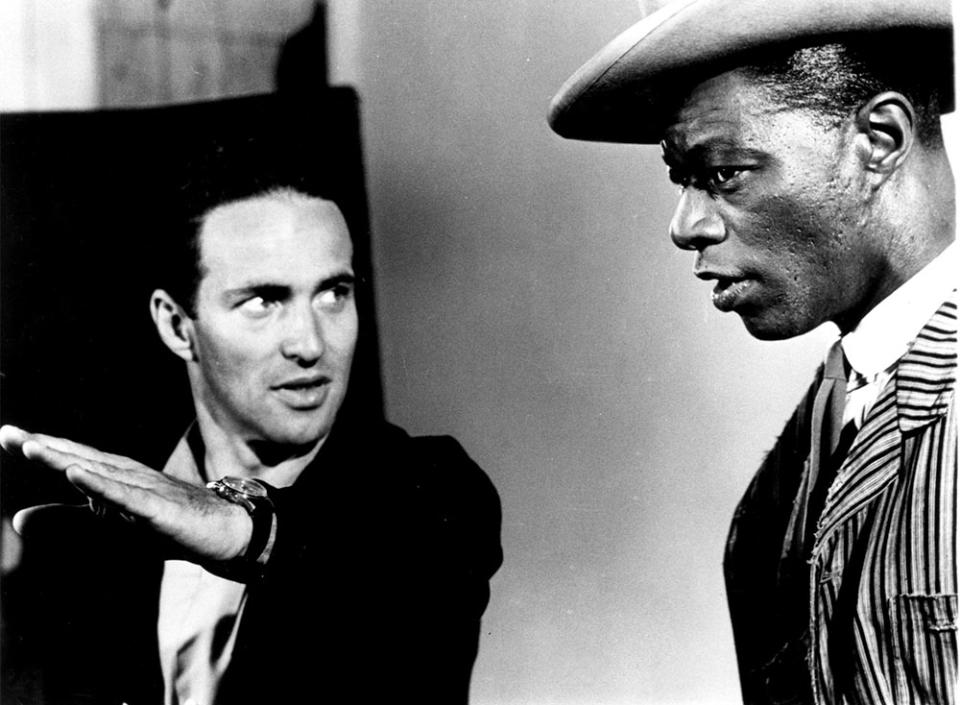Elliot Silverstein, Director of ‘Cat Ballou’ and ‘A Man Called Horse,’ Dies at 96

Elliot Silverstein, who helmed episodes of such acclaimed TV shows as Naked City, The Twilight Zone and Route 66 before guiding Lee Marvin to a best actor Oscar in Cat Ballou, his feature directorial debut, died Friday in Los Angeles, his family announced. He was 96.
The Boston native also helmed A Man Called Horse (1970), which starred Richard Harris in the title role as an English aristocrat who eventually becomes the leader of the Native tribe that had captured and tortured him. The action movie spawned a couple of sequels.
More from The Hollywood Reporter
Most importantly, Silverman was instrumental in the formation of the milestone Bill of Creative Rights for directors.
“Every director today owes a debt of gratitude to Elliot Silverstein,” DGA president Lesli Linka Glatter said in a statement. “No one ever worked harder or was more passionate about protecting artists from having their work and vision altered than Elliot.”
It was Silverstein who suggested that Marvin be cast as Kid Shelleen in Columbia Pictures’ Cat Ballou (1965) after Kirk Douglas had turned down the role in the comic Western. He later threatened to quit when a producer wanted to replace Marvin at the start of production with José Ferrer.
Silverstein also came up with the idea for the film’s Greek chorus, played by Nat King Cole and Stubby Kaye. Those characters were not in Frank Pierson and Walter Newman’s original script.
“That set the style of the piece for me,” he said in a 2002 interview for the DGA’s Visual History Program. “Once I had managed to get that, I knew that it would give me license to go very far with the rest of the characters and be funny.”

The son of a doctor, Elliot Silverstein was born on Aug 3, 1927, in Boston and raised in Dorchester, Massachusetts. He attended Roxbury Memorial High School for Boys; Boston College, where he changed his major from biology to drama; and Yale University to pursue directing.
After producing and directing plays for Brandeis University — including one with Leonard Bernstein conducting — he helmed and staged productions for the prestigious Sunday TV series Omnibus in 1955-56.
For Broadway in 1958, he directed the comedy Maybe Tuesday, written by Mel Tolkin and Lucille Kallen and featuring Brett Somers, Barry Newman and Alice Ghostley, but it lasted just five performances.
Silverstein then started working in episodic television, landing on series including The U.S. Steel Hour, Suspicion, The Further Adventures of Ellery Queen, Route 66, Have Gun — Will Travel, Naked City, Dr. Kildare, The Twilight Zone and The Defenders.
His four Twilight Zone episodes were “The Obsolete Man” and “The Passersby” in 1961, “The Trade-Ins” in 1962 and “Spur of the Moment” in 1964.
It was on “The Obsolete Man,” starring Burgess Meredith as a librarian, that his editor refused to cut the ending of the episode that way he wanted. He then discovered that a director’s rights were limited, that they only had the right to view the first rough cut and to communicate improvements to the associate producer.
With Silverstein’s urging, DGA president George Sidney authorized the creation of a committee in November 1963. The group, which included Robert Altman and Sydney Pollack and chaired by Silverstein, met each Sunday for six months and came up with the Bill of Creative Rights, released in April 1964.
“It was a manifesto of the young Turks from New York invading Hollywood, and now we were going to say how things should be done,” he said.
One declaration concerned the Director’s Cut. “The arrangement of the recorded images and sounds in a relationship the Director considers proper shall be known as the ‘Director’s Cut,'” the document read. “It is the Director’s creative right and obligation to prepare this cut, and he must be given the time he deems necessary to fulfill this function.”
In the fall of 1964, the DGA got the Bill of Creative Rights, including the Director’s Cut, into its new contract with producers. This provision is now regarded as the cornerstone of all director’s rights.
Silverstein “knew how deeply intertwined the end product was with a director’s authority to execute their vision and that these rights were essential for their best work to shine through,” Linka Glatter said. “Almost 60 years ago, Elliot successfully led the charge to secure the right to a director’s cut — something that had been a DGA goal for years. And through his work and determination he helped codify and negotiate a list of creative necessities with producers through the development of the Bill of Creative Rights — something which governs the rights of DGA members to this day.”
In the 1990s, Silverstein founded the Artists Rights Foundation to advocate for the concept of filmmakers’ moral rights. In 2002, it consolidated into The Film Foundation under the DGA, and Silverstein remained active in fighting for directors’ rights.
Said Film Foundation founder and chair Martin Scorsese: “Elliot Silverstein was a tireless champion of the creative rights of filmmakers — he fought valiantly to preserve the vision and original intent of all artists. Every American filmmaker has benefited from his fierce dedication.”
For his efforts, Silverstein received the Robert B. Aldrich Achievement Award from the DGA in 1985 and was named an honorary life member of the guild in 1990.
Silverstein also directed The Happening (1967), starring Anthony Quinn, and the cult horror film The Car (1977), starring James Brolin, and, more recently, episodes of Picket Fences and Tales From the Crypt. He taught at USC after his retirement.
Survivors include his brother, Jason. He was married three times, including once to actress Evelyn Ward, mother of singer-actor David Cassidy.
Best of The Hollywood Reporter
